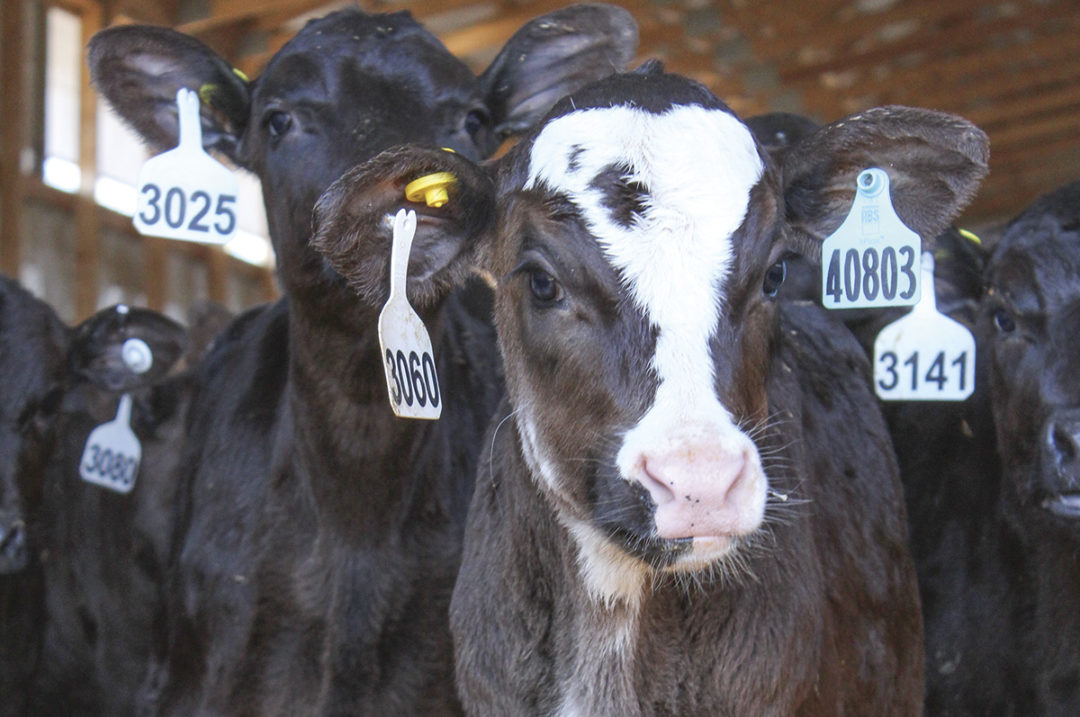While the phrase "black-hided cattle" has not traditionally been one used in the dairy industry, it has found its way into the vocabulary of many dairy producers in recent years. Why would this non-traditional phrase become one that is commonly used? We can answer that with another phrase: beef-on-dairy.
Beef-on-dairy is not new to our industry. Today, we create more beef cross calves that enter the beef supply chain than ever before as dairies zero in on genetic selection and turn up their selection intensity. Traditionally, the beef supply chain has demanded black-hided cattle from native beef producers.
Why does hair coat color matter if the animal is all red meat underneath the hide?
Why the beef supply chain demands black-hided cattle
The desire for black-hided cattle stems from the Angus breed’s reputation for excelling in sought-after characteristics like productivity, marbling and growth traits. It is a breed known for its potential to produce high-quality beef. Premiums can be awarded by packing plants for black-hided cattle that excel in quality grade. Programs like Certified Angus Beef have further increased demand with their marketing and training consumers to choose “Black Angus” or “Certified Angus Beef” (CAB) at the grocery store. However, there are guidelines cattle must pass to qualify for these programs and their premiums.
For example, cattle in the beef supply chain looking to qualify for Certified Angus Beef must meet the predominantly black hide criteria. Knowing Angus crosses could potentially include cattle with white on the face, underline or legs, each steer or heifer must first pass visual appraisal to qualify as "Angus type," meaning they have a predominantly black hide. The cattle must first pass this visual appraisal before continuing through the CAB protocol for labeling.
Why use coat color to determine carcass quality
Coat color has historically been used as a proxy to identify the genetic merit of an animal because it is easy to observe, unlike marbling or other meat quality characteristics. This means cattle producers are subject to discounts for excessive white, but the true value of the carcass produced is based on their genetics.
For dairy producers, you might have experienced coat color conversations with your calf buyer. Calf buyers typically use coat color to avoid purebred Holstein genetics from entering the beef supply chain. That’s why excellent record-keeping and using the right beef genetics on your dairy is critical to avoiding those dairy discounts.
Don’t be fooled. High-quality beef cross calves are qualifying for premiums and even CAB. Based on over 4,400 calf coat color observations in ABS Global’s database, more than 95% of genetics met CAB’s predominantly black hide requirement.
How is coat color determined?
To lay the foundation, we need to shift gears a bit to determine how coat color is determined in genetics. Because it is determined by more than one gene and the interaction among those genes has not been completely identified, coat color is a complicated subject. A common misconception in the dairy industry is the thought if a cow is bred to a bull that is tested homozygous black, then all the resulting progenies will be all black. However, that is not the case because the test is based on the gene responsible for red versus black hide color, which means the bull will never produce a red calf.
It sounds obvious to say, but hide color is determined by the genetics an animal receives from its sire and dam. The genetic material passed from parent to offspring plays a role in coat color. For any trait, a sire contributes 50% of the genetic makeup of a calf, while the dam supplies the other 50%. We sometimes forget the mother’s genetic makeup influences why we see occasional white markings in beef cross animals.
There are other genes responsible for diluting a base color, sometimes making cattle gray, adding brindle or spots. In common U.S. beef breeds, there are at least seven genes associated with color inheritance (and likely others that also play a role), and each gene exerts varying impacts on the color of cattle. It is important to note the color variations seen in beef breeds – red, black, brown, white, gray or brindle, to name a few. Keep in mind as dairy producers, the colors you are most familiar with are black, white and brown, which is very different than what beef producers see.
Is coat color an economic driver in the supply chain?
We discussed earlier that excessive white markings can be an economic driver for dairies selling day-old calves or calf growers selling to a feedyard because calf buyers use it to avoid pure Holstein genetics. It is key to know that outside of that scenario, coat color has no impact on performance of the calf or carcass quality, meaning it does not affect what is under the hide.
Cattle entering the supply chain produce the same color of meat under the hide: red.
To support this, we can look at ABS Global’s data comparing solid black cattle to black cattle with white markings. Analyzing over 1,500 records showed Carcass Values of $1,742.06 for animals with white markings present and $1,734.79 for solid black. The data was evaluated for Hot Carcass Weight, Ribeye Area, Marbling Score and Back Fat, in which all values were statistically no different. This proved that cattle with white markings were just as valuable as solid-colored from a carcass standpoint.
While there is a reality of discounts for excessive white, genetics under the hide are responsible for the carcass value produced.
Quick facts about coat color
- The Holstein dam supplies 50% of the genetic makeup of a beef-on-dairy calf.
- Coat color is determined by more than one gene and the interaction among those genes is not well defined.
- Coat color is a tool used by cattle buyers to identify purebred Holstein calves that are commingled with beef-on-dairy crosses.
- High-quality beef cross calves can meet black hide requirements and qualify for Certified Angus Beef and other premiums.
- On the rail, cattle with white markings can produce carcasses with just as high carcass value as black-hided animals.
Over the years, we have learned how to choose the right genetics when it comes to utilizing beef sires on dairy cows. We improved the quality of the beef cross calves entering the marketplace through genetic selection, but there is still a vast variation in quality. However, as we have shown here, it is not the color of the animal’s hide that makes it valuable, but the genetics under the hide that matter.
Are you considering what’s under the hide to create more valuable beef cross calves?











